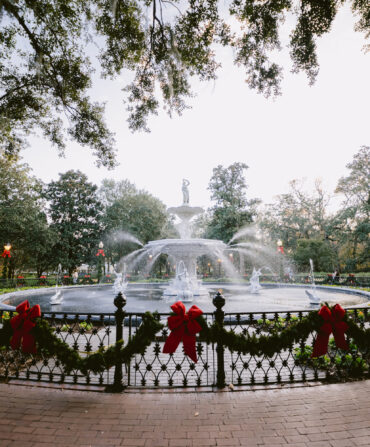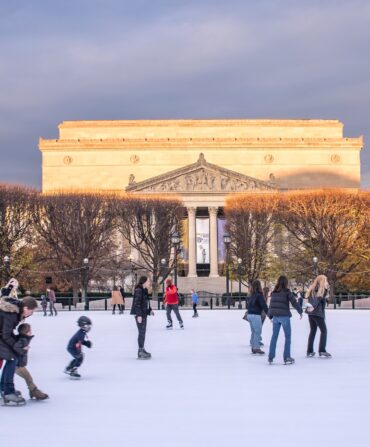By far the most interesting international trips I’ve made in my life—from the windswept wilds of Labrador, to the vast Russian tundra, to the endless aquamarine flats of the Bahamas, to the verdant Chilean rainforest—have occurred because of my obsession with fly angling. Fly fishing (and bird hunting, for that matter) does not happen in ugly places, as they say. So while, yes, I have made some overseas trips without my fly rod and visited many of the world’s great, vibrant cities and lingered in awe in their famous museums and savored every bite I’ve had in their great restaurants, I have always preferred letting my fly rod guide me into the wilds of a different country. These trips have become indelible in memory. I think of Bruce Chatwin’s great line in his travel book Anatomy of Restlessness, that “travel does not merely broaden the mind. It makes the mind.” I like to think that my mind has been made by engaging with the flora and fauna—and the locals who love them—in the different countries I’ve traveled, something that gets you to the very essence of a place.
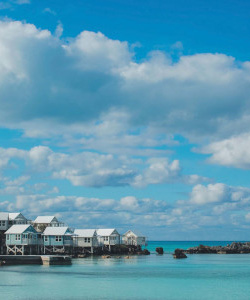
Staying at a lodge, as opposed to a do-it-yourself trip, often makes the most sense when it comes to sporting travel, given that we are short on time (with work and family and other obligations and, in a larger sense, on this earth). Yes, some parts of these lodges are not exactly rugged, but usually those features—amenities like the bedding, for instance—are the things from home that you don’t mind having along. But the best sporting lodges will immerse you wholly in something wildly different and absorbing.
Superb sporting lodges are found across the world, but we’ve narrowed down a list to twelve of our favorites, places where you can do a driven pheasant shoot on former royal hunting grounds, catch the world’s largest salmonid, and even attend a falconry school, all while both broadening and making your mind.
Ashford Castle
Ireland
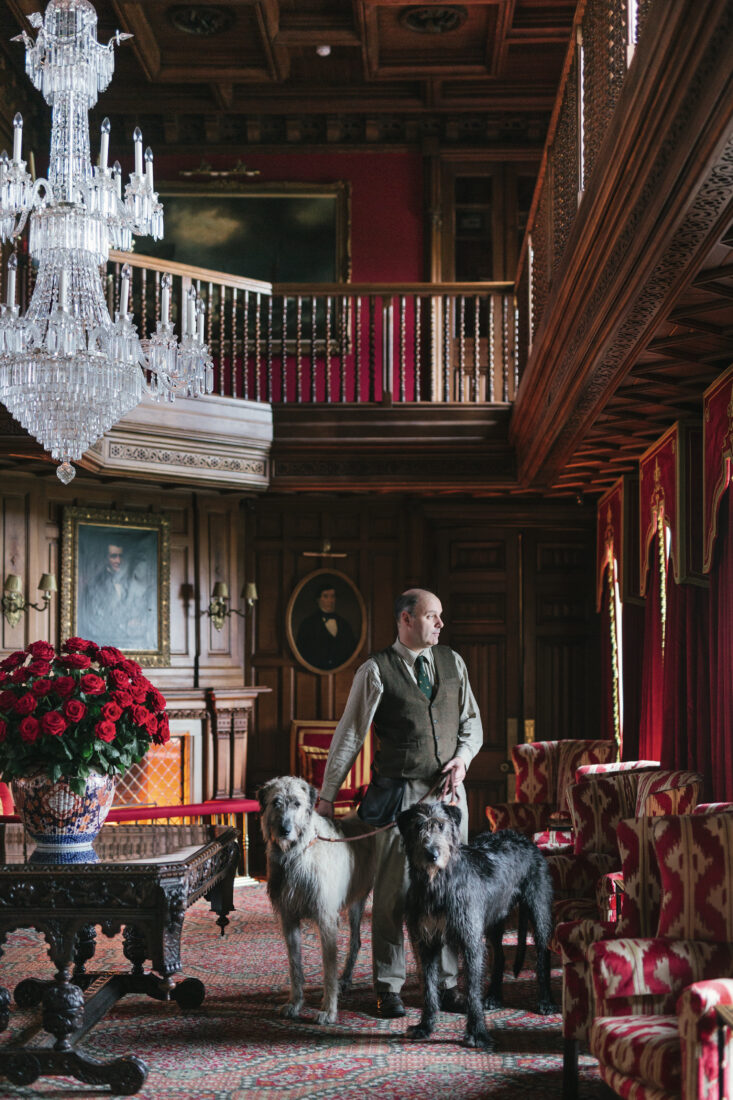
This medieval-meets-Victorian castle was originally constructed in 1228, and its owners have included the Guinness family of Ireland. Situated on 350 acres at the mouth of the River Cong as it empties into Lough Corrib, the castle features more activities than you could possibly cover in a month, and thus is a good place for a family trip. There are tennis courts and a golf course, a cinema and a spa. The rooms feel like comfortable period pieces, with silk-lined walls and antique furnishings. The dozen dining areas on the property range from the formal George V Dining Room (named after the former king of England, one of the castle’s distinguished guests), which serves a signature beef dish and locally caught seafood, to the Squire Danagher’s, which transports diners to 1950s Cong with traditional Irish food and nightly entertainment (Irish storytellers and dancers). Despite the sundry distractions, sportsmen and -women have a place at Ashford, as well. Guests can shoot clays or practice archery. They can cast for Atlantic salmon in the River Cong, or fish for brown trout in Lough Corrib from a nineteen-foot wooden “clinker” boat, under the watchful eye of a ghillie who grew up on the grounds. But perhaps most intriguing is the castle’s falconry school, Ireland’s first. Guests walk through the woods with an instructor and their own Harris’s hawk, watching the raptor fly among the treetops and then return to land on their gloved hand. The walks, while not intentional hunts, sometimes end up with the hawk finding small prey.

Silver Hilton Steelhead Lodge
British Columbia
If catching a wild steelhead is on your bucket list—and if it’s not, it should be, as it ranks among the most-difficult-to-catch-yet-most-rewarding sport fish on the planet—then Silver Hilton on the Babine River is your place. The lodge offers a true wilderness experience, some fifty-five miles from the town of Smithers, which is the closest thing to civilization around and the place from which guests are helicoptered in. The Babine has some of the world’s healthiest steelhead runs and its fish are known for their size—up to thirty pounds. The lodge has two camps: the main one, which sleeps eight in well-appointed log cabins, and the Triple Header, seven miles upriver. Silver Hilton fishes more than twenty miles of water, using jet boats to reach pools. They are large and long—knowing how to cast a double-handed fly rod offers an advantage—and guests have them all to themselves. This section of the Babine is known for its dry fly fishing for steelhead, some of the most exciting angling in the world. Hot lunch is served riverside, and many guests follow dinner back at the camps with a well-earned sauna, to help purge any memories of lost fish and errant casts. The nine-week season runs from early September till early November.
Loyton Lodge
England
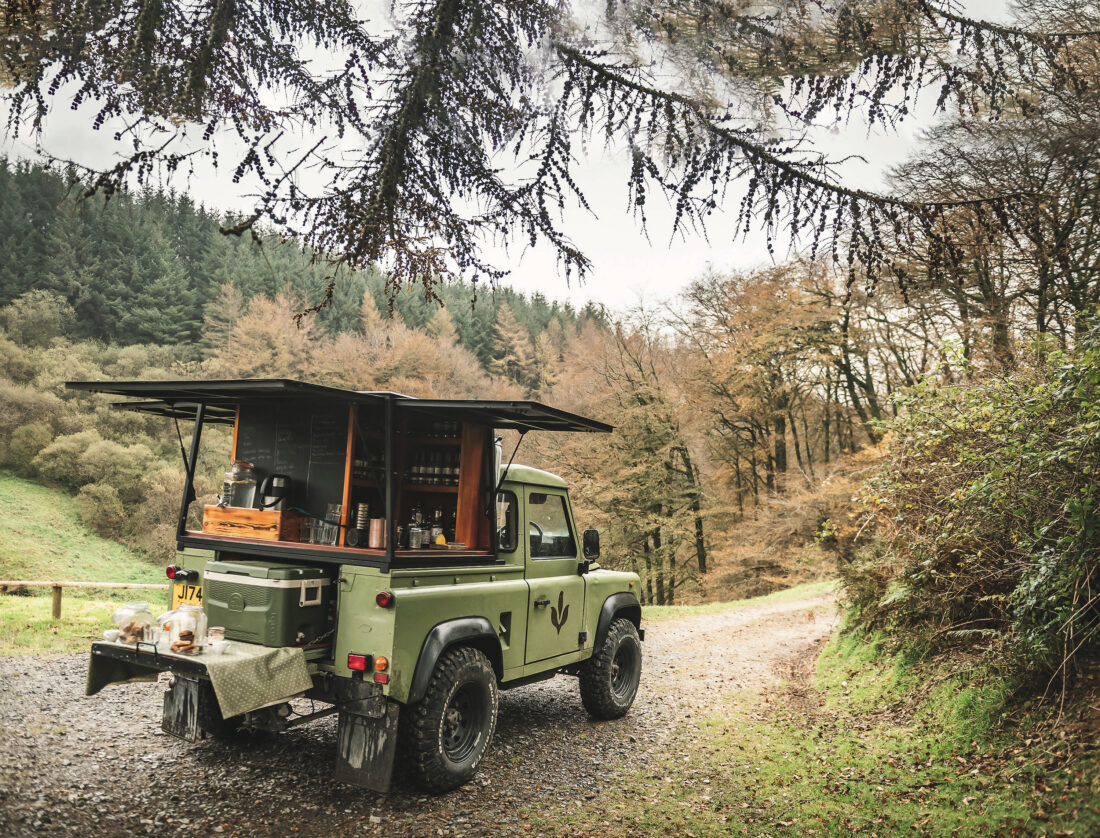
A driven shoot in the U.K. is the quintessential bird-hunting experience. And if you’ve ever wanted to indulge your inner Anglophile and don the tweeds and wellies to hunt for pheasant or partridge in the English countryside, Loyton Lodge is, as the Brits might say, ace. The lodge manages seven different shoots for a maximum of ten guns each across the enchanting moorlands of Exmoor, which were once royal hunting land. The season begins on the first of September with partridge and continues with pheasants into January. Each hunter is furnished with his or her own personal “loader”—a gun-bearer with intimate knowledge of the terrain and the birds—and shoots over a team of exquisitely trained spaniels and Labradors. Guests craft their own days: You can hunt early or sleep in or even take a day to explore the woodlands and coastline of nearby Exmoor National Park, but be sure not to miss the lodge’s breakfast, famous for its size and variety, with the usuals—yogurts, cereals, eggs—mixed with classic Anglo fare, like homemade beans and black pudding and even kippers for the adventurous. Most guests shoot in the morning and then break for lunch in the field (perhaps caviar and a pheasant burger) and then shoot again before heading back to the lodge, which has the feel of an English country home, with a large sitting area warmed by a fireplace, a billiards room, and ten bedrooms outfitted with roll-top baths and Egyptian cotton towels and sheets—all manned by cheery yet unobtrusive staff.

Pronay Castle
Hungary
This eighteenth-century castle, some thirty-five miles north of Budapest, was once the lair of Hungarian noblemen before the Soviets confiscated and partially destroyed it after World War II. In the 1990s, its revival began, and it now hosts some of the best bird hunting—and best variety of hunting—in Europe. Hungary may not come first to mind when it comes to driven pheasant, but the hunt can be spectacular—with a much higher volume than hunts in the U.K.—and most of it takes place in fields and on grounds within minutes of the castle. What makes Pronay truly special, though, is the access to other types of hunts, like the shooting on a series of nearby ponds for speedy flighted mallards, which will challenge even the most experienced guns. The lodge also offers hunts for some of Hungary’s legendary big game species, such as wild boar, red stag, and fallow deer. Guests stay in one of six elegantly appointed rooms within the castle and are encouraged to customize each hunting day to their desires. Afterward, there is a daily, long-hallowed, celebratory “game parade,” with horn blowers, bonfires, and cocktails. Dinner is accompanied by wines from the castle’s three-hundred-year-old cellar (a family of winemakers owns the castle and grounds). Local flavors abound: There is a traditional Hungarian wine tasting on the evening of arrival, and nightly entertainment from area bands and dancers. The bespoke international sporting agency Jagd Stiedl can assist with booking.
Ventosilla Palace
Spain
In times past, the cardinals and lords of the nearby town of Toledo hunted the estate of this fifteenth-century palace, on the banks of the River Tajo. In the late 1800s, Ventosilla hosted the first driven partridge shoot in Spain, attended by the country’s king. Though the lodge offers the traditional U.K. style of hunt (high overhead birds), Ventosilla stands out as the place to do a traditional Spanish version of a driven hunt—known as an ojeo—which presents challenging, fast-paced birds that hug the rolling hills and valleys. There are more than fifty drives at Ventosilla, and guests hunt four or five of them per day, accompanied by their own loader and secretario (assistant), and breaking for midmorning tapas and then lunch. The shoots are less formal than their U.K. counterparts, and the weather is usually warmer and drier. Every evening welcomes an elegant dinner, served with exceptional Spanish wines, back at the palace. No surprise that Mike Fitzgerald, president of the vaunted outfitter Frontiers Travel, includes Ventosilla among his favorites.
Magic Waters
Chile
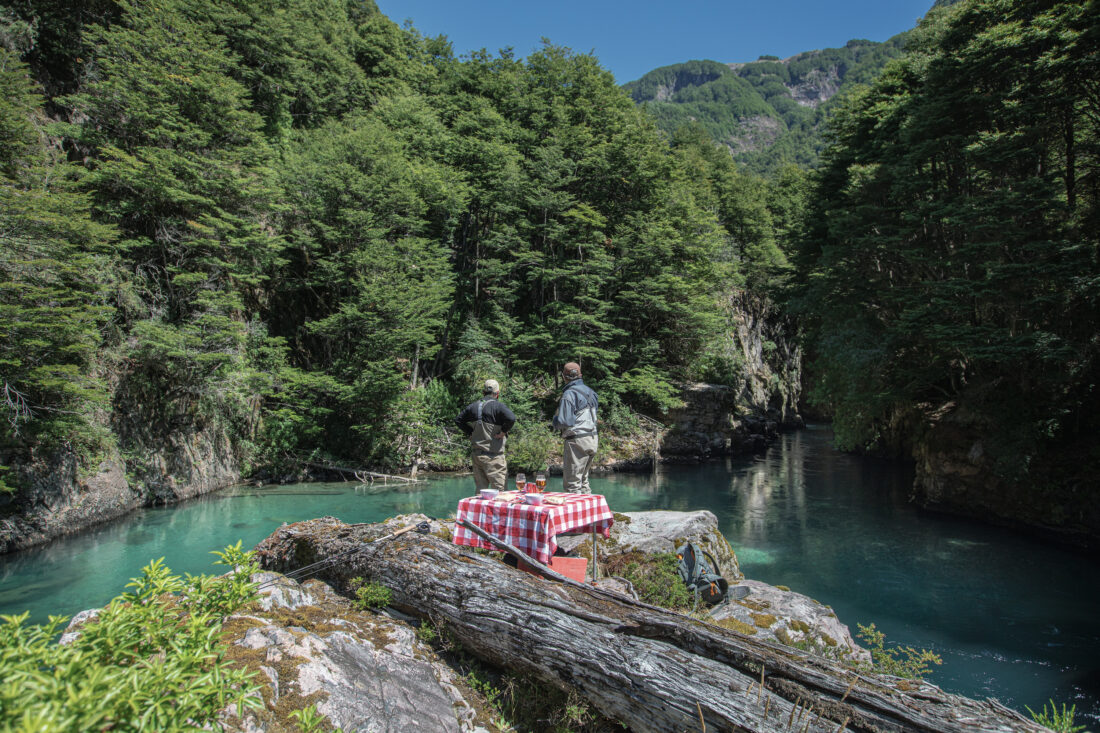
Variety is the name of the game at Magic Waters. The lodge has access to technical fishing on tiny bejeweled spring creeks on the arid steppes, leisurely float trips on big emerald-green freestone rivers that wend their way through coastal old-growth rainforests, and lake fishing, where anglers cast big flies to enormous trout that cruise the shorelines. Guests can fish different water every day. The guides are some of the finest on the planet—calm, helpful, and companionable. The lodge itself has a rustic exterior, built from native wood and stone, but is warm and inviting on the inside, featuring a great room with a large window and a stunning view of the laguna below. Magic Waters’ owner, Eduardo Barrueto, has lived in this valley all his life and is well acquainted with the local water. The chef specializes in family recipes that include local lamb and locally caught seafood, all of it paired with excellent Chilean wines.
Los Ombues Lodge
Argentina
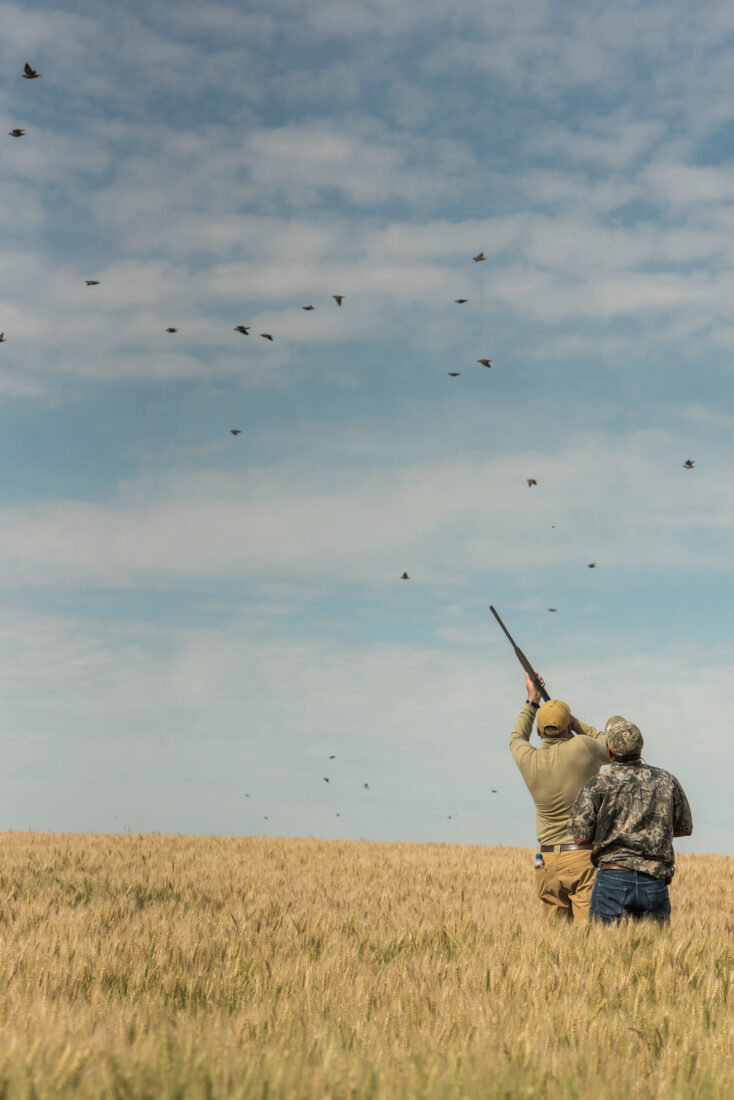
A typical day at Los Ombues—some 250 miles north of Buenos Aires—goes like this: After breakfast, guests leave the stately 12,000-square-foot lodge and head just down the hill to the Parana River marsh and boat to a blind. There, they hunt for ducks, including many species—like the white-cheeked pintail, the red shoveler, and the rosy-billed pochard—that may be unfamiliar to the North American hunter. After you’ve had your fill (and a café con leche), you’ll trade waders for boots and embark on a driven hunt for perdiz (red-legged partridge), which abound in the fields surrounding Los Ombues. After a lunch back at the lodge of, say, grilled dove or perdiz, sneak in a siesta—you’ll need the restorative because you’ll be heading out to some of the finest dove fields in the world, where you can shoot to your heart’s content as thousands of birds fly above you. When you’ve had enough, head back to base camp for a dip in the pool, or to chip a few balls around the putting green, take a sauna, or let a masseuse help those shoulders uncoil from shooting. After a shower, have a drink by the big window that overlooks the wetlands you hunted in the morning, and then ease into a dinner served with a full-bodied malbec or crisp torrontés. Los Ombues’ mixed-bag hunting season runs from May until August. Doves are hunted year-round, which means, as the lodge staff likes to say, every day is opening day.
Eg-Ur River Taimen Camps
Mongolia
Ready to test your sporting mettle? Head to Mongolia to tangle with taimens, the world’s largest salmonids, which average around three feet long but can grow to almost double that. Mongolians refer to the taimen as “the river wolf,” and the voracious eaters feast on ducks, mice, prairie dogs, and when it’s presented properly, your fly. This is a game of quality over quantity: You won’t be catching ten fish a day. But even one taimen can make a trip. (And if the endless casting for taimens ever gets tedious, eager lenok—a salmonid that resembles a brown trout—can provide a change of pace. They line the riverbanks and love dry flies.) Anglers fish primarily from boats, working one section of river and then “dropping” down to a new one. The two camps—the upper is on the Ur River, the lower is on the Eg—offer what’s essentially a glamping experience. Guests stay in riverside gers, which are roomy rounded tents outfitted with comfortable cots and sleeping bags, a table and chairs, and a woodstove. The showers are hot and the sauna hotter, and the scrumptious meals, taken in the main lodges at the camps, combine local and Western foods. These hideaways aren’t easy to reach—guests fly into Ulaanbaatar by way of Seoul or Beijing, and then hop on a two-hour flight to the camps. But the fishing, scenery, and other diversions—guests can go horseback riding or hiking and visit the ruins of old Tibetan monasteries—are worth it. The camps have no internet or Wi-Fi, but you’ll be okay. The prospect of catching a taimen will hold your attention just fine, and those work emails and social media posts will still be there when you get home.
Arhvammur Lodge
Iceland
King Charles III (back when he was but a mere prince) was among the early guests at this Atlantic salmon lodge on the Hofsá River in northeastern Iceland. Arhvammur offers seven beats with eighty marked pools along eighteen miles of river. The top beat, within a canyon and at the foot of an impassable falls, is one of the most famous: Salmon congregate there throughout the season, late June to early September. But the other six beats more than hold their own, featuring some classic Atlantic salmon pools that are perfect for swinging small wet flies. The Hofsá is known for its strict conservation practices (catch-and-release only and no more than two fish landed per pool, per day), which help it produce some of the largest salmon in Iceland, with some up to twenty pounds, a thrilling challenge on a small fly. Anglers typically fish for four or more hours in the morning and then pause for a large lunch and, if so desired, a nap. They go back out for more in the evening before heading back to the comfortable lodge for a three-course dinner, with panoramic views of the treeless, windswept river valley backdropped by snow-topped mountains, all of which can make you feel, well, a bit like royalty.
Cedar Lodge
New Zealand
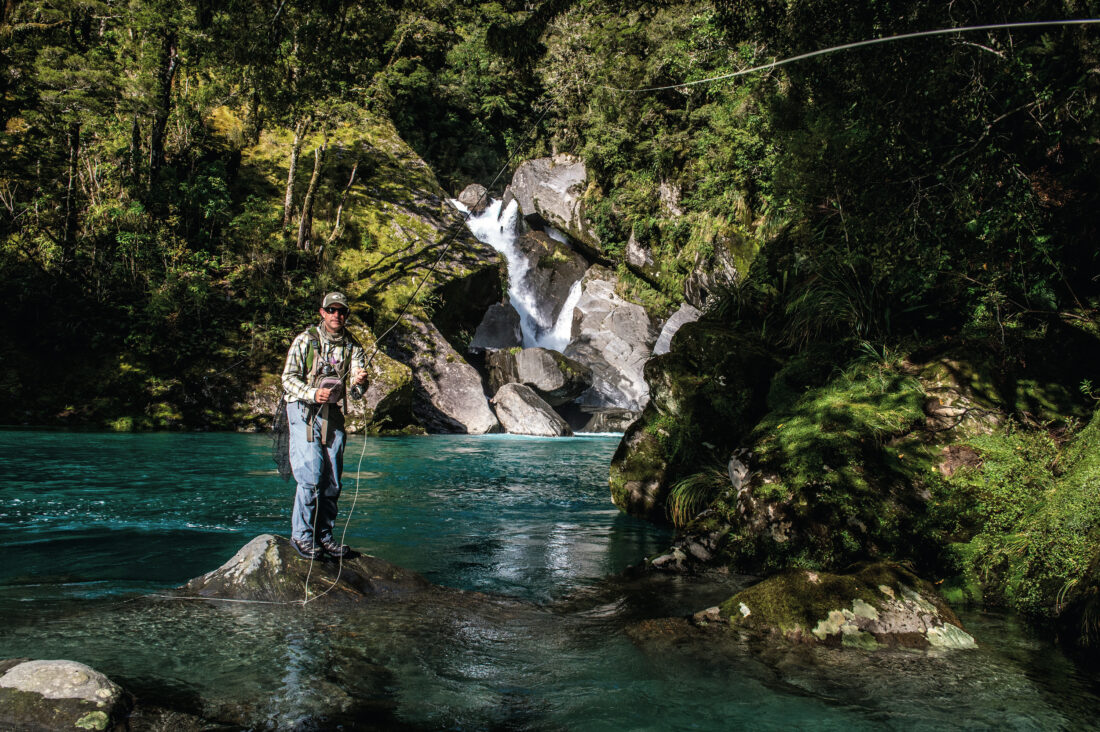
Tucked into a valley in the Southern Alps of New Zealand’s South Island, Cedar Lodge offers perhaps the apex experience for the serious trout angler. Each morning, after a hearty breakfast, anglers board helicopters to the pristine wilderness of nearby Mount Aspiring National Park and are led by a guide to rivers with air-clear pools to sight, stalk, and cast to wary trout (of three to six pounds), testing every bit of fishing skill. Wash, rinse, and repeat this (literal) breathtaking experience all day, until helicoptered back to the deluxe lodge—which has four guest suites—where you’re greeted with hors d’oeuvres and cocktails. The dinners alone are almost worth the trip, featuring items like New Zealand lamb and king prawns, all complemented by the country’s finest wines—a Villa Maria pinot noir, for instance, or a Church Road chardonnay. The season runs from mid-November through March, and the typical trip runs five to seven days, which gives you time, if you’d like, to fit in some heli-hiking or tours of nearby wineries.
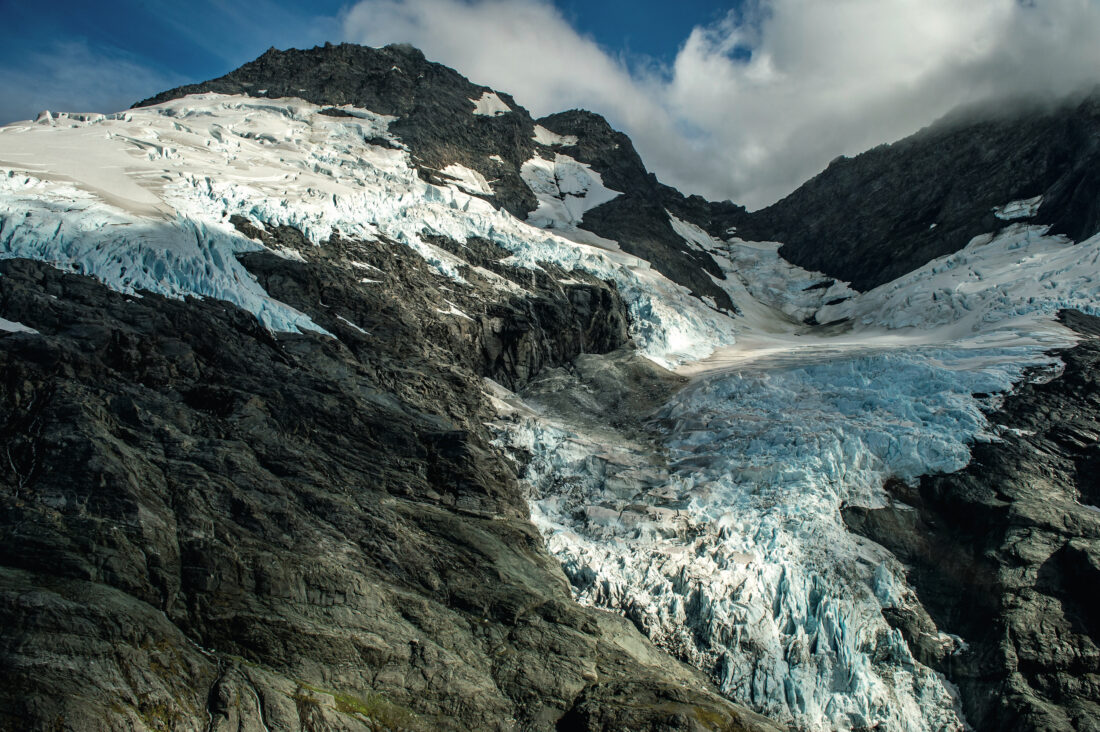
Grand Slam Lodge
Mexico
In saltwater fishing terminology, an inshore grand slam means an angler, in one day, catches any three of the following: bonefish, permit, tarpon, and snook. A super grand slam means all four in a day. This Yucatán Peninsula lodge is aptly named, for regular and super grand slams are fairly routine occurrences on the flats of Ascension Bay, an untamed and untrammeled stretch of salt water within the Sian Ka’an Biosphere Reserve, a UNESCO World Heritage Site just south of Tulum. The bonefish are eager and found on shallower flats. The permit, while still picky, are more numerous and a bit more eager than their Florida Keys kinfolk, and anglers often target them while wading. Tarpon and snook ambush flies by the mangroves. Every morning, two Grand Slam guests head out with two guides on a comfortable fiberglass panga to seek out a slam of their own. At the end of the day, they return to the lodge and its six villas, located on a private beach, before feasting on the likes of fresh-caught lobster. For non-anglers, or for those who can somehow pull themselves away from the stupendous fishing, there are plenty of other pursuits, including excellent birding in Sian Ka’an, snorkeling, and visits to Mayan ruins.
The Delphi Club
Bahamas
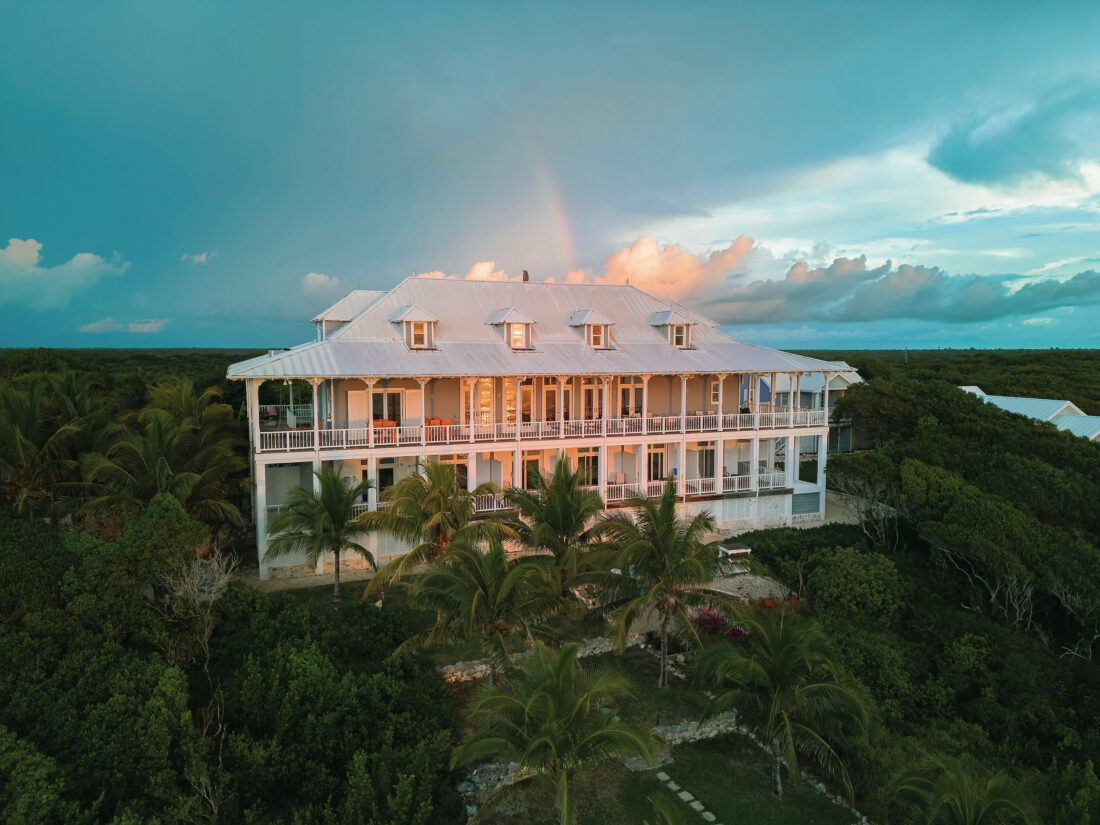
While there are countless top-notch bonefish lodges in the Bahamas (and more than a few that are little more than a brick box with a wheezing AC unit), it would be difficult to find one that does it all better than the Delphi Club, which combines excellent fishing with old-school luxury. On a typical trip, you might spend your first day getting your feet wet (not literally—you’ll be standing on the bow of a Hell’s Bay skiff) in the Marls, a three-hundred-square mile wilderness expanse of flats where the fish are plentiful and relatively easy to catch. With that under your belt, you’ll be ready to try your luck on the endless ocean-side flats, home to big but extremely wary bonefish. To the south, Sandy Point, and its ample creek mouths swimming with plentiful schools of bones, are well within reach. So is More’s Island, which, though no longer really a secret, still offers some of the best fishing for big bonefish and even permit in the Bahamas. Each day, you get to return to the elegant, eight-bedroom main lodge, built in the British colonial style and surrounded by blooming bougainvillea and hibiscus, amid a forest of casuarinas and palms. After a quick dip in the infinity pool or swim off the private beach out front, guests gather on the grand porch or in the cozy reading room and wash down wahoo canapés with a Kalik or a Yellow Bird before settling in for an exquisite dinner (with main courses like roast duck and freshly caught tuna), served up at the lodge’s communal long table.




